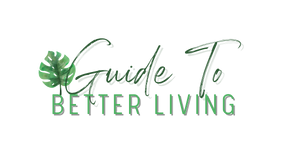What is the Keto Diet?
What IS keto? What are keto diets? For those who don’t know or aren’t familiar, a keto diet – which is short for ketogenic – is a vary low-carb based diet or way of eating, including moderate protein meals with higher fat content.
This meal is designed for you to get more calories from protein and fat and less from carbohydrates and can be a real challenge to get your head around when you get started. It seems like everything we were once taught about the traditional food pyramid is wrong! Or is it?
What I’ve learned over my 25 year weight loss and wellness journey is that it all comes down to our own unique chemical makeup and that starts with our DNA.
For me, I’ve learned that I don’t produce high levels of something called the AMY1 gene. This gene is responsible for creating AMYLASE: the enzyme in our saliva that is responsible for breaking down carbohydrates before they hit the blood stream. As I don’t break down carbs as efficiently as others, it means that carbohydrates create inflammation in my gut and in my body and aren’t converted into fuel so are stored instead as fat.
Learning about this and why a low carb or keto diet can be effective for some people has been a game changer for me! It’s not for everyone, however if you are looking at trying low carb or keto, I would always recommend that you check in with a doctor or health professional to see if this way of eating could suit you.
The keto diet is an interesting way to effectively burn fat. Living on a keto diet or lifestyle has more benefits than just burning fat effectively however and I’ve been amazed at all the other benefits that go with it!
It may also help improve the general overall well-being of your body including better sleep, less brain fog, better digestion and a sense of elevated mood.
Most importantly, I love the Keto way of life as it is a way of reducing fat without going through a series of hunger strikes! You get to eat real, tasty food and still get to stay in shape! It almost seems crazy, but I love it!
So, what is Keto, and how does it work in the body?

Keto is short for ketogenic. It is the word used to describe a diet of low levels of carbohydrates which causes the body to produce ketones, which act as an artificial energy source for the body. Once your glucose levels slow, the body will resort to using the ketones to make up for the energy needed.
Ketones are alternative energy molecules that are produced in the liver from fats. Ketones are produced when we eat low-carb foods.
When the body needs energy, and the glucose level is low (since the food has low calories, which means lesser glucose will be produced), the ketone is used for running all the body parts in need of energy, including the brain.
When you switch to a keto diet, your body will run on ketones produced directly from fats when the glucose level in the body is low. This means the body will end up turning all forms of existing fat into ketones. If this process continues for awhile, most of your fat residues will end up being converted to ketones.
This may result in you losing weight. Most people notice a steady supply of energy to their body, lesser hunger periods, and no more fluctuating sugar level periods that result from eating high carb foods.
This can help you remain focused and alert throughout the day.
There are a few different versions of Keto diets and it’s worth taking a look and seeing what may work best for you.
The different types of keto diets
In starting a keto diet, you have to pick the type of keto diet you want:
1. High protein ketogenic diet: This is the type of keto diet which includes a lot more protein with the ratio becoming a 35% protein, 60% fats, and 5% carb meal.
2. Standard ketogenic diet (SKD): This is the most popular type of low carb diet and is ideal for beginners. It is a 20% protein, 70% fat, and 10% carb based meal. In this instance it would be advisable to get your carbs from foods such as non-starch vegetables such as cauliflower and broccoli.
3. Cyclical ketogenic diet (CKD): This is a scheduled ketogenic diet, where for five days a week, you use the standard keto diet plan, and for the other 2 days eat your standard meal plan including carbs. For some people this suits their lifestyle particularly if they are catering for a hungry family as well and not wanting to cook separate meals for themselves.
4. Targeted ketogenic diet (TKD): This is the kind of keto dieting that allows the user to slot in high carb food during workouts. Both the cyclical and targeted keto diet is mostly used by bodybuilders and athletes.
5. Lazy Keto: This is a more flexible version of keto and focuses on the user being more low carb. Generally, lazy keto followers limit their carb intake to between 20 and 50 grams but don’t need to rigidly track their consumption of macros or calories.
6. Dirty Keto: There are two ways most people approach keto – clean keto and dirty keto. The key difference between clean and dirty keto is that clean keto is focused on whole, natural foods. Dirty keto refers to a diet of less wholesome, more processed or factory-farmed keto – friendly foods and ingredients. For most people it comes down to time, budget and convenience.
And the way I see it is do what works for you. If you try it and it works, BOOM. If it doesn’t, make a change and try something else.
Have a look through this shopping list and see what changes you can start making today!

Hi I'm Monique Bradley.


